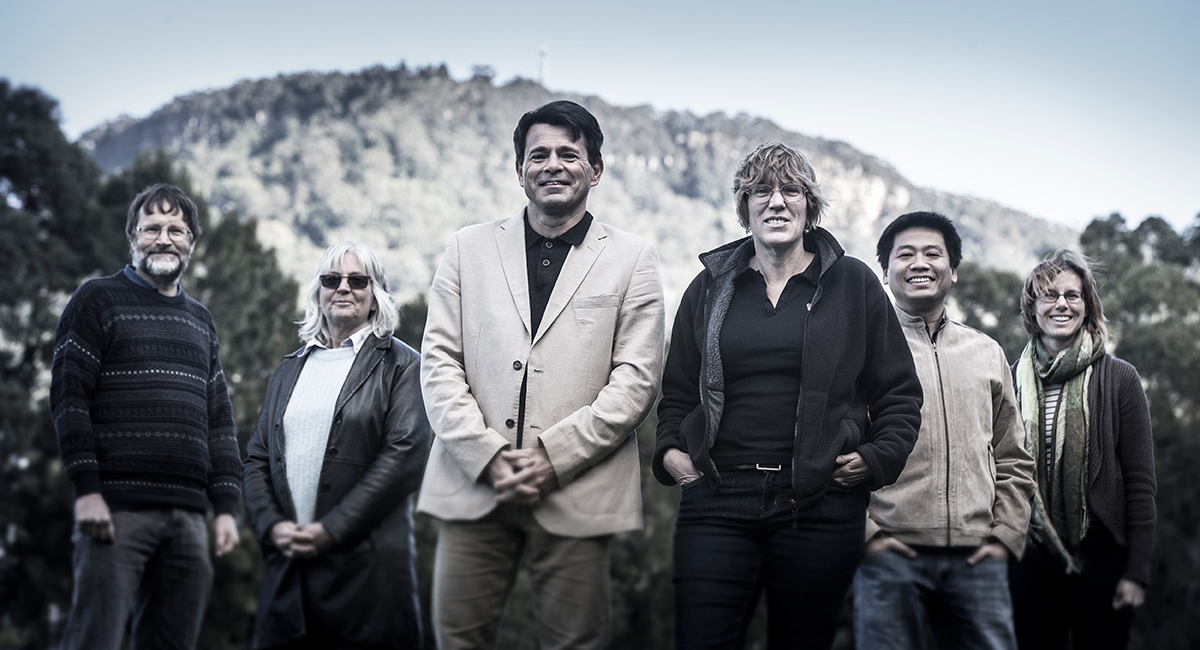July 3, 2015
Air pollution under the microscope in Sydney’s west
Study will help in understanding and managing urban air pollution in Sydney's rapidly growing western suburbs.
The Western Air-Shed and Particulate Study for Sydney (WASPSS), which is part of the National Environmental Sciences Programme (NESP) Clean Air and Urban Landscapes Hub, was launched this week (2 July) by Parliamentary Secretary Bob Baldwin and Craig Kelly MP, the Member for Hughes.
The UOW-led study will bring together experts from UOW’s Centre for Atmospheric Chemistry (CAC), and UOW’s SMART Infrastructure Facility (SMART), alongside teams from the University of Melbourne and the University of Western Australia to contribute to the understanding of the main drivers of poor air quality events within the Western Sydney region.
It also aims to deliver policy advice for continued monitoring of air pollution and improved air quality modelling and tools that will be beneficial for other cities and urban centres around Australia.
The effect of air quality on public health is of vital importance for the Western Sydney region[1], which is predicted to be home to an additional 1 million people (46 per cent growth) and half of Sydney’s entire population by 2031[2].
The project will build on existing research by the NSW Office of Environment and Heritage, the Environmental Protection Agency and supporting agencies and research institutions, to help inform future plans for monitoring air quality and policies designed to reduce exposure to particulate matter.
WASPSS leader Dr Clare Murphy said the project would ultimately aid the management of air quality within the greater Sydney region.
“The negative health impacts of airborne particulates on urban populations are now well established,” Dr Murphy said. “While the air quality in Australian cities is generally very good compared to many other parts of the world, Sydney experiences occasional poor air quality events that expose the population to heightened health risks.
“One of the first questions we need to consider is what is the current state of air quality in Western Sydney based on the data we have available and how does this compare with other areas of the state, country and cities overseas.
“By the end of the project the results of the studies, combined with modelling for various future air conditions and associated health impacts, we hope will help inform evidence-based and cost-effective policies to reduce the population’s exposure to poor air quality.”
Phase one of the study will assess current air quality research in Western Sydney to identify where the Clean Air and Urban Landscapes hub can best contribute to the existing monitoring and modelling of air pollution.
Other activities planned in the early stages of the project will include developing best-practice modelling for traffic-based emissions in the Western Sydney region, building a high-resolution model or digital map of the atmosphere to identify pollution hot spots, testing average trace gas pollutants over long distances as well as indoor air quality in a variety of buildings.
“The project will bring together accurate monitoring of various emission sources with fit-for-purpose traffic and urban landscape models,” Dr Murphy said. “Using this sophisticated modelling framework our research team will be able to account for other sources of airborne particulates, such as bushfires and natural processes like emissions from vegetation.
“This innovative approach will help us create an accurate picture and predictor of particles and volatile compounds within the Sydney basin. If we combine the air pollution models and estimated exposure levels with health data we can also get an idea of the expected respiratory and other health outcomes.”
Leader of the Clean Air and Urban Landscapes Hub Professor Peter Rayner, from the University of Melbourne, was also announced as Australia's third Clean Air Champion.
“Clean air is essential for the health and wellbeing of our urban populations,” Professor Rayner said. “Finding practical solutions to air quality will be a win-win situation. It will help make our cities healthy and that will underpin economic growth.”
“Air quality is an issue of equity. Everyone deserves to have clean air. Cities are the most complicated machines humans have built. This complexity means we need to understand many different facets of the urban environment, but it also means we need to act quickly. The air quality of our cities in 2050 depends on the decisions we make today.”
[1] The Western Sydney Region comprises the 14 Local Government Areas as defined by NSW Department of Planning and Environment: Blue Mountains, Hawkesbury, Penrith, The Hills, Blacktown, Parramatta, Holroyd, Auburn, Fairfield, Bankstown, Liverpool, Camden, Campbelltown, Wollondilly.
[2] Source: NSW Department of Planning and Environment 2014 NSW and LGA Population, Household and Dwelling Projections.
